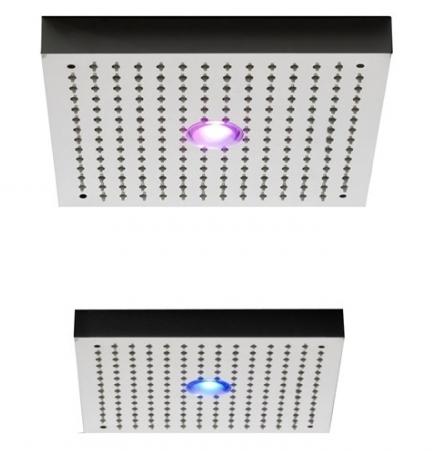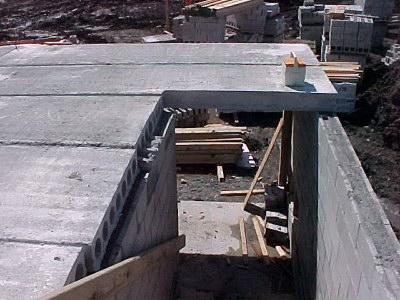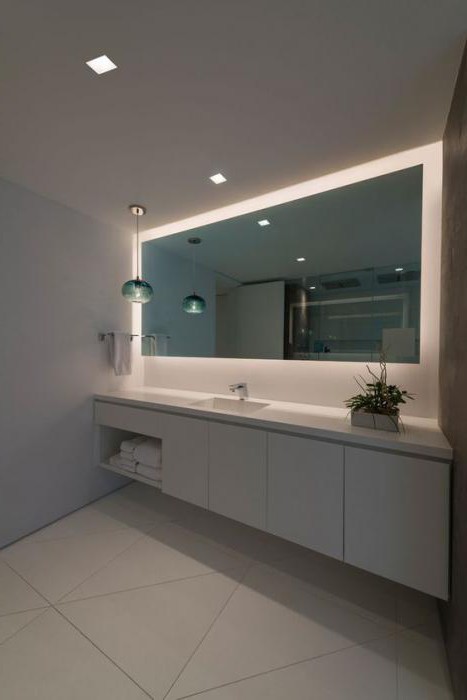Ceiling and their types
At first glance, it would seem that today it is easyfind beautiful quality ceiling coverings. The choice of such products in building supermarkets is huge. However, this is the opinion of people who have not yet faced repair.
In fact, the problem is preciselylarge selection of materials. They differ in their technical characteristics, external features, cost. In this article we will present you the most popular variants of ceiling coverings, the materials from which they are made. In addition, you will find out under what conditions they are recommended to be used. We hope that our recommendations will help you when choosing the right option.

Types of ceiling coverings
Today, several popular coatings are used, which are used in residential areas. We will present you the most common of them.
Whitewashing or painting
This finish is suitable only for completely flat surfaces. Without preliminary preparation of a ceiling you can not receive a good result.
Wallpaper gluing
This is a fairly old way of finishing, which has not lost its relevance today. It is used not only for finishing residential premises, but also for the design of offices and small commercial premises.
Suspended structures
To date, one of the mostcommon methods of repairing the ceiling in the apartments. For its manufacture, a special frame is made, to which the outer finish is mounted - different materials, from which it is possible to create interesting compositions suitable for different interiors.
Cassettes, plates
Ceilings that are assembled on a frame ofindividual elements. It can be plates, metal cassettes, gratings. This type includes the ceiling coating "Armstrong" and the ceiling grilyato. Most often this type of ceilings is used in commercial or office premises.
Tensioning cloth
These modern ceiling coverings are gaining popularity every year. This is due to the versatility of the material and its wide possibilities for design.

Panels and plates
They can be made of foam plastic or plastic. Polyurethane or plastic slabs are often used in dachas or with budgetary repair of apartments.
Types of ceiling coverings are divided into several groups:
- Suspended.
- Stretch.
- Plastered.
- Sewing.
- Adhesive.
Most often today, a false ceiling is used. This is a construction that consists of facing elements and a frame. Typically, a wooden or metal frame that holds the plates is created in the form of a grate, which is supported by suspensions attached to the wall or the main ceiling. Facing materials are installed after the frame is completely reinforced on the suspensions. They must meet the basic requirements: to have the same shape and dimensions of the panel. Professional installers call these elements modules or registries.
The creation of such a ceiling is justified whenit is required to make the main ceiling "invisible", but to keep at the same time access to engineering systems and communications - computer and television wiring, ventilation and heating equipment, electricians. These structures contain fire systems, ventilation grilles, lighting devices and at the same time the acoustics improve noticeably. According to the type of lining material used, such ceilings can be latticed, modular, solid or rack-mounted.

Advantages of suspended structures:
Durability
Ceilings of this type are companies engaged ininstallation, provides a fairly long warranty. By giving a warranty card for ten years, they are usually reinsured: in fact, the design serves much longer without changing the technical characteristics and external features.
Aesthetics
Suspended ceiling coverings perfectly hide the shortcomings of the main surface. For their installation, there is no need to perfectly level the surface, whiten or paint it.
Provision of heat and sound insulation
Such ceiling coverings for rooms providehigh resistance to sudden changes in temperature, which is especially important in apartments located in a multi-storey building. Excellent sound insulation ensures that noisy neighbors will not bother you.
Even the best ceiling coverings have drawbacks. In hanging constructions they include:
- Reducing the distance between the floor and the ceiling. This design reduces the height of the room by 5-15 cm. With a ceiling height of less than three meters, this can be considered a significant drawback.
- Quite high cost. Whitewashing or painting, undoubtedly, will not require large financial investments, but when the ceiling is uneven, all in cracks, then additional spending will be required for its alignment. In addition, in this case, it is necessary to take into account additional inconveniences: dirt, dust, construction debris.
- Without the help of professionals, it is difficult to quickly and correctly make such a ceiling. Special knowledge, skills and equipment are needed.
For any ceiling structure, you canuse a variety of coatings, of which the decorative canvas is assembled. Therefore, choosing a suitable design, you should choose the material from which the ceiling will be made.

Materials for ceiling coverings
Modern ceiling coverings can havedifferent design and have different properties, which allows you to use them in different rooms. The characteristics depend on the properties of the selected material. Let's look at what type of ceiling coverings and their types are, what properties they have.
Plaster
This type of decoration has long been well known. It is rather complicated and laborious in execution. A lot of time (even for professionals) takes the surface leveling, its putty and painting. In addition, to achieve a good result, you need to mount a special plaster mesh.
However, with respect to technology, you canGet the ceiling of the highest quality, which will be distinguished by an ideal smoothness. And one more important point: for too low rooms (for example, in Khrushchev), this option is sometimes the only one, since it does not reduce the height of the room.
Such a coating has a significant drawback -difficulty in cleaning, it is impossible to wash. If such a finish is made in a new building, very soon the surface may become covered by cracks that form during shrinkage of the building.
Wallpaper
To reduce the labor costs of putty and coloringcan be replaced by wallpapering. This will significantly reduce the cost of the ceiling. In principle, any wallpaper can be applied to the surface of the ceiling, but to get a high-quality coating, it is better to use special cloths designed specifically for this surface.

Adhesive ceilings are quite oftenare used not only in residential premises, but also in offices and trade enterprises. The basis for the production of such a material is glass fiber. Experts recommend using the following types of wallpaper for the ceiling:
- vinyl;
- non-woven fleece;
- liquid wallpaper;
- glass walls.
Before start of gluing, preparation is required.the ceiling. You can not correct minor defects, but large cracks should be fixed. At cost, these are very affordable ceilings. Ceiling cover from wallpaper can be used as a budget option for surface refinement. The shortcomings include the impossibility of wet cleaning.
Expanded polystyrene tiles
The installation of this material is done on slabsoverlap with glue. It should be noted that when using conventional plates, the surface does not look very attractive (although this is a matter of taste). Much nicer is the seamless linens that are assembled from such slabs. A special shape of the edge and a special pattern make it possible to create the appearance of a solid surface.

Today, special models of thismaterial from which it is possible to create an imitation of other ceiling structures. The advantages of this coating include low cost and the possibility not to process the base surface. The disadvantage of this coating is the outdated appearance.
Rack and plastic panels
Such coatings are similar in installation and technicalcharacteristics. Differences exist in their appearance, as well as the price range. According to their type they belong to suspended ceilings. It's quite easy to make such a ceiling with your own hands. It does not require preliminary surface preparation.
These covers are interesting and, from the design point of view. Communication and ventilation can be carried out inside such a structure, and in the ceiling itself, for example, to make spotlights.

The drawback of this design is the reductionthe ceiling height is about seven centimeters. However, it is very easy to install and a beautiful view of the decor. Panels are produced with a different pattern, but the most common imitations of the surface of wood with a characteristic pattern. The panels are mounted on a frame base or on a glue, directly on the floor.
In the first case, one can obtain a varietyfalse ceiling. The second option is much simpler and can be used even in not too high rooms. Since natural materials are valued today, panels covered with real wood veneer can become an excellent choice.
It is interesting to look plastic and metal ceiling coverings. In the bathroom or kitchen, they will be indispensable, because water resistance and simple maintenance in these rooms are important.
Tensioning cloth
In recent years, living quarters have increasinglyMount tension ceilings. Today we can say with confidence that this is the best ceiling covering. It refers to the types of false ceiling. Today, the stretch fabric differs in the variety of textures and rich colors. To produce them, a wide variety of films are used, as well as textiles, which do not require the use of a thermal gun during installation.
Stretch fabrics, regardless ofused material, have excellent performance and can be used in any room. If you want, you can apply a pattern to the tension web. This allows you to create unique ceiling structures.

Despite the fact that today these ceilings are very popular, we can not help saying about the shortcomings of this design:
- Decrease in height, which is typical for all suspended structures;
- the difficulty of transferring fixtures without the help of a specialist;
- impossibility of eliminating damages to the canvas;
- high cost (here it should be noted that today the cost of such coverage has decreased, and it can already compete with gypsum plasterboard).
Drywall
And this is the most universal ceiling coverings. They have perfectly proven themselves as a reliable and high-quality material. Mounted GKL on the skeleton base, and the final appearance of the design depends only on the imagination of the designer or your own.
Drywall allows you to create a compositionalmost any form. There is an opinion that this is expensive material, but this is not true. In the beginning, when it first appeared on our market, its value was somewhat exaggerated, but today it is not the most expensive way of finishing.

It should be noted that today there are new samples of this material, which are characterized by increased moisture resistance, which makes it possible to use it even in the bathroom.
Mirror Panels
In addition, that mirrored ceiling coatingsare very beautiful, they will help you create a unique interior in any room: "raise" the ceiling, visually expand the room, make it more light and spacious.

In the installation, the mirror ceiling remindscassette, but there is a difference: in it, the modules of plasterboard are replaced by mirror plates, which are covered with anti-fragmentation film for strength and protection on the back side. The size of the plates is 600x600 mm. This design holds profiles, which can be of a variety of colors, as well as mirror, like the plates themselves. This ceiling has a high level of moisture resistance, so it can be successfully used in the bathroom (of course, if height allows).
As you can see, the choice of ceiling coatings todayis great. Nevertheless, if you take into account all the advantages and disadvantages of existing structures and materials, you will certainly be able to make the right choice for your premises.







